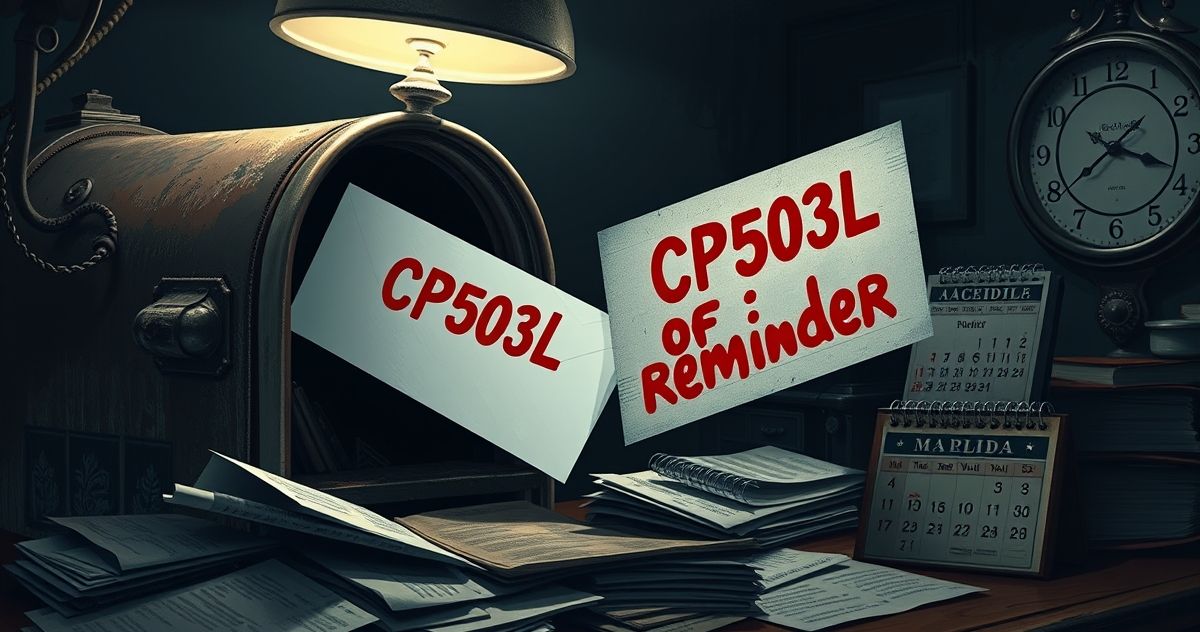Understanding the CP503L Reminder
The CP503L Reminder is a formal communication from the Internal Revenue Service (IRS), sent to taxpayers who have an outstanding tax liability that remains unresolved after the initial notice. This reminder acts as an important warning signal, indicating that timely action is required to address the unpaid taxes before more severe measures are taken. The CP503L is one of the several notices in the IRS’s automated collection process designed to ensure taxpayers comply with their tax obligations.
What is the CP503L Reminder?
The CP503L Reminder is essentially a follow-up notice by the IRS indicating that a taxpayer’s account has one or more outstanding balances that have not been paid despite previous reminders. It serves to notify individuals of the exact amount owed, including any interest and penalties accrued up to the date specified in the notice. While the CP503L does not demand immediate payment, it strongly urges taxpayers to address the issue to prevent further escalation.
Primary Purpose of the CP503L Reminder
The primary purpose of the CP503L Reminder is to alert taxpayers to their delinquent status regarding their federal tax responsibilities. It serves as part of the IRS’s attempt to resolve the unpaid liabilities through voluntary compliance before taking more direct enforcement actions. The objective is to motivate the taxpayer to either pay the full amount due or contact the IRS to negotiate terms of payment, such as installment agreements or other resolution options.
Key Features or Components of the CP503L Reminder
- Account Summary: The notice includes a detailed summary of the taxpayer’s account, outlining the balance due, including all penalties and interest that have been applied to the original tax debt.
- Due Date: It specifies a date by which the taxpayer is encouraged to respond to avoid further complications.
- Contact Information: The notice provides contact information for the IRS, allowing taxpayers to reach out with inquiries or to discuss payment options.
- Potential Consequences: The notice explains the risks of continued non-compliance, such as increased penalties and the potential for the IRS to take enforcement actions like levies or liens.
Filing or Compliance Requirements
While the CP503L Reminder itself does not entail a specific filing requirement, it requires the taxpayer to take action regarding their outstanding obligation. The preferable action is to pay the amount stated in the notice by the deadline provided. If unable to pay in full, the taxpayer should contact the IRS to explore other payment methods, such as setting up an installment agreement. Compliance means addressing the notice proactively to avoid escalation to further enforcement measures and additional penalties.
Penalties or Consequences for Non-Compliance
Ignoring a CP503L Reminder can lead to several adverse consequences, including:
- Increased Penalties and Interest: The taxpayer’s balance will continue to accrue interest and fees, compounding the overall debt.
- Further IRS Notices: Continued inaction could result in the issuance of subsequent notices, further signaling the severity of the situation.
- Enforcement Actions: If the taxpayer fails to respond, the IRS may proceed with more aggressive collection actions, such as placing a lien on property or initiating a levy.
- Credit Score Impact: Unresolved tax debts reported on credit scores can adversely affect the taxpayer’s financial reputation, impacting their ability to acquire loans or other financial advantages.
Importance in Tax Resolution and Financial Compliance
The CP503L Reminder plays a pivotal role in both tax resolution processes and overall financial compliance strategies. It offers taxpayers a critical opportunity to correct their standing with the IRS before the situation worsens. Timely response to this notice can potentially save taxpayers from harsher financial repercussions, making it an essential component of tax compliance efforts.
By acknowledging and addressing a CP503L Reminder promptly, taxpayers can negotiate manageable payment solutions, mitigate the risk of enduring enforcement actions, and maintain a better financial reputation. Regular compliance not only helps individual taxpayers but also ensures the integrity and functionality of the federal tax system as a whole, highlighting why these reminders are an integral part of enforcing tax laws effectively.
Ultimately, understanding the implications of the CP503L Reminder and taking immediate action can significantly influence a taxpayer’s financial health and secure compliance with federal tax obligations.

